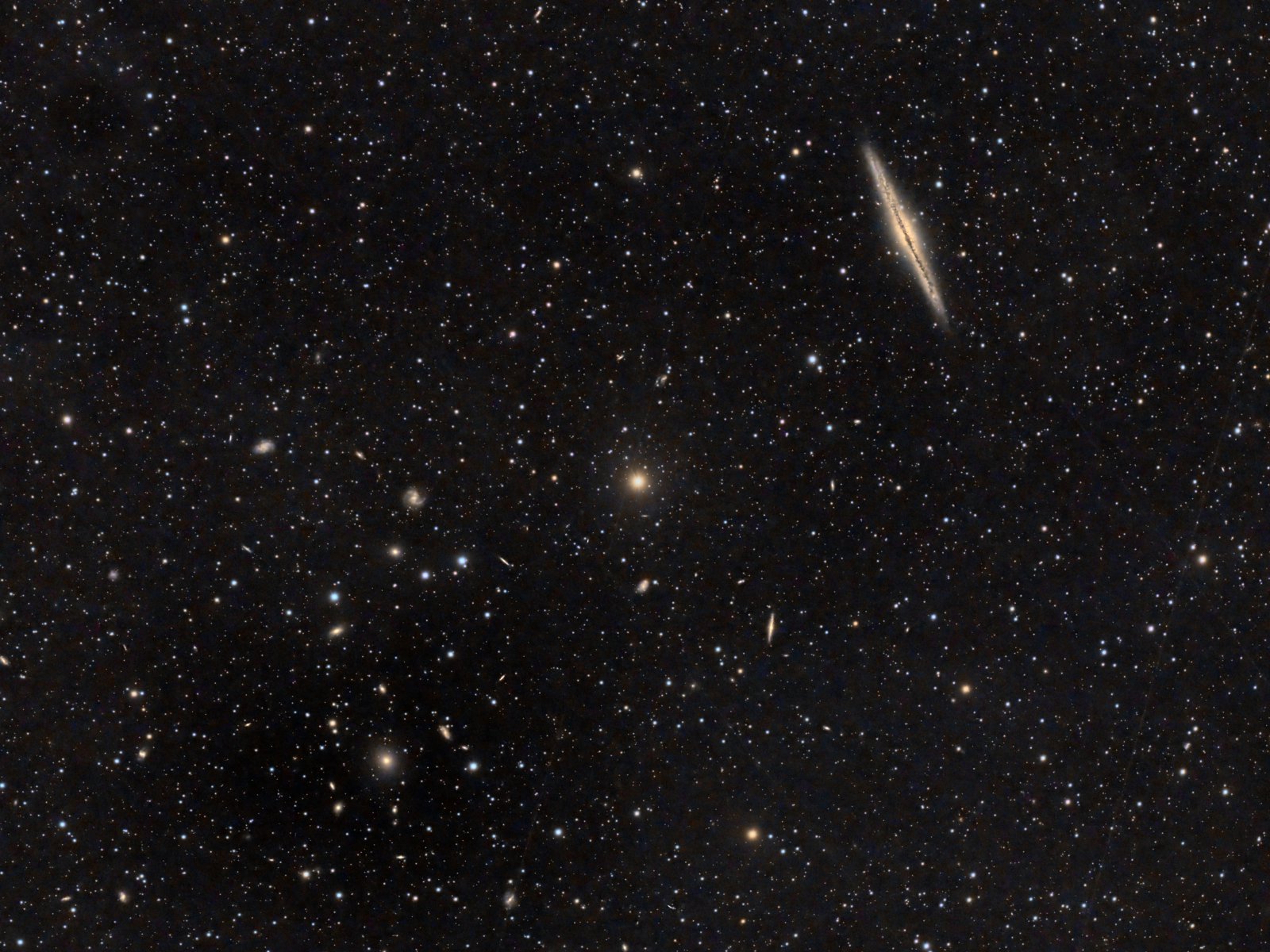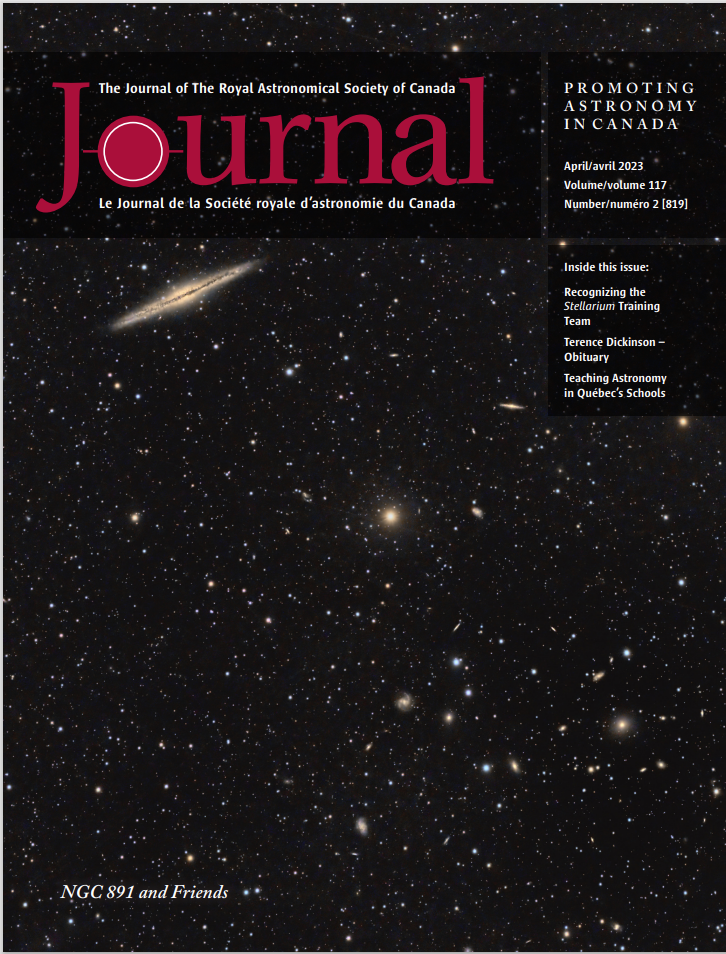NGC 891 and Friends

Click image for full size version
February 16, 2023; Cover of April 2023 Issue of the Journal of the Royal Astronomical Society of Canada
 NGC 891 is an edge-on spiral galaxy located in the constellation Andromeda, about 30 million light years away. It shows a prominent dust line with lots of details, and some astronomers think that it looks similar to how our own galaxy would look seen edge-on from a distance. I put the galaxy up in the corner of this image to allow me to include the dozens of distant galaxies in the lower left of the image. I prepared an annotated image that identifies some of them.
NGC 891 is an edge-on spiral galaxy located in the constellation Andromeda, about 30 million light years away. It shows a prominent dust line with lots of details, and some astronomers think that it looks similar to how our own galaxy would look seen edge-on from a distance. I put the galaxy up in the corner of this image to allow me to include the dozens of distant galaxies in the lower left of the image. I prepared an annotated image that identifies some of them.
Tekkies:
Acquisition, focusing, and control of Paramount MX mount with N.I.N.A., TheSkyX; unguided. Focus with Optec DirectSync motors and controller. Equipment control with PrimaLuce Labs Eagle 4 Pro computer. All pre-processing and processing in PixInsight. Acquired from my SkyShed in Guelph. Good transparency and seeing. Acquired February 6-13, 2023 under a moon-free sky.
Sky-Watcher Esprit 150 f/7 refractor and QHY600M camera with Optolong UV/IR filter
Tak FSQ-106 @ f/5 (530mm), QHY-367C Pro One-shot colour, Optolong UV/IR filter
104x5m OSC = 8hr40m
Preprocessing: The WeightedBatchPreProcessing script was used to perform calibration, cosmetic correction, weighting, registration, local normalization and integration of all frames.
Alignment of Master Frames: DrizzleIntegration was applied to the OSC frames (within WeightedBatchPreProcessing), and the result was aligned to the Luminance master with StarAlignment. This yielded aligned Lum and Colour masters.
Gradient Removal: DynamicBackgroundExtraction was applied to the three masters.
Colour Calibration: ColorCalibration was used to calibrate the OSC master.
Deconvolution: BlurXterminator was used on each master with a custom psf FWHM determined with the PSFImage script, and star sharpening set to 0.08.
Linear Noise Reduction: NoiseXterminator was applied to each image with settings Amount=0.9 and Detail=0
Stretching: HistogramTransformation was applied to each image to make a pleasing yet bright image.
Combining Luminance and Colour Images
Luminance addition: LRGBCombination was applied to replace the lightness of the RGB image with the Luminance master.
Additional Processing
Star Removal: StarXterminator was used to remove the stars.
Nonlinear Noise Reduction: NoiseXterminator was used to reduce noise in the background areas of the image with settings Amount=0.9 and Detail=0.3
Contrast Enhancement: LocalHistogramEqualization was applied twice using an inverted lightness mask to protect the background and select the galaxy. A Contrast Limit of 1.5 and 1 iteration were used for each application (scale 40, strength 0.25; scale 100, strength 0.25).
Sharpening: MultiscaleMedianTransform was used to sharpen Layers 1 – 5 with strengths of 0.03, 0.05, 0.05, 0.04, and 0.03, respectively.
Star Restoration: Stars removed using StarXterminator were added back into the image using straight addition in PixelMath.
Final Steps: Background, galaxy and star brightness, contrast and saturation were adjusted in several iterations using CurvesTransformation with masks as required. ICCProfileTransformation (sRGB IEC61966-2.1; Relative Colorimetric with black point compensation) was applied prior to saving as a jpg.








Gorgeous image, like always!